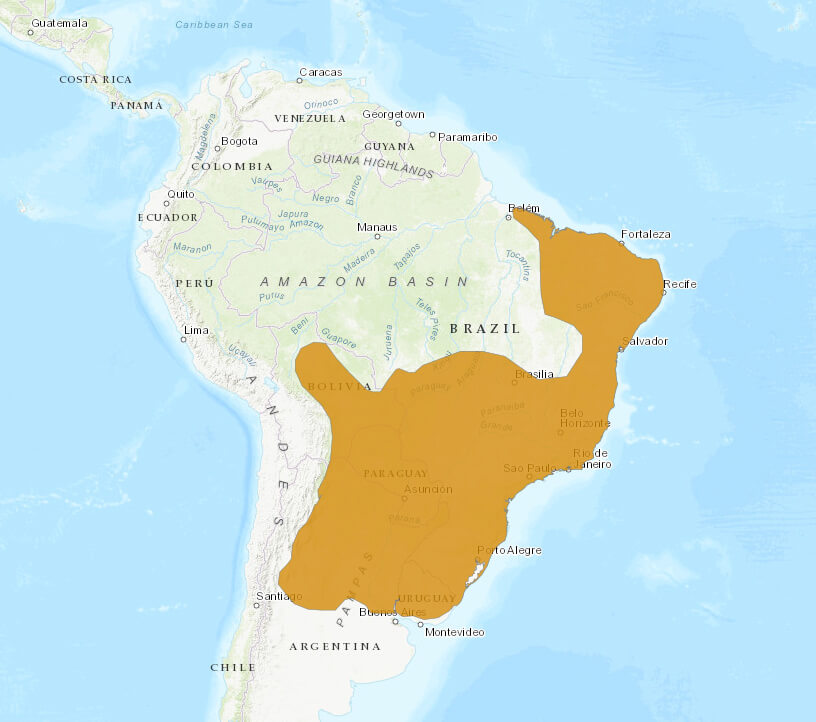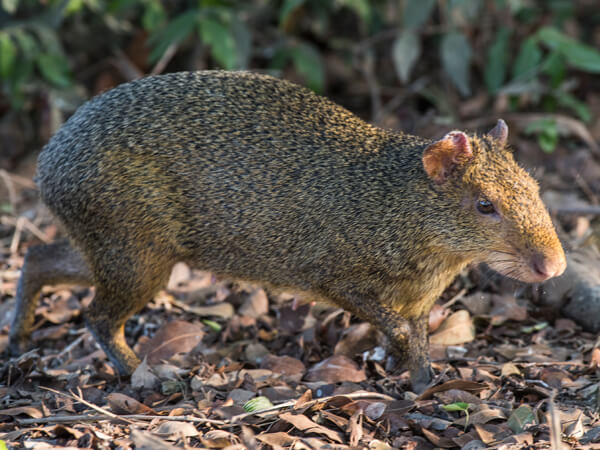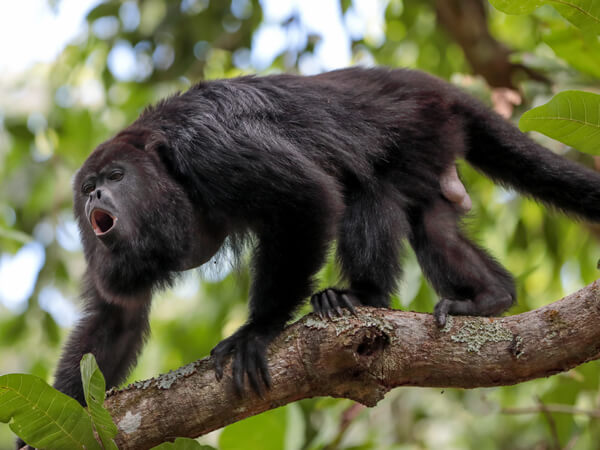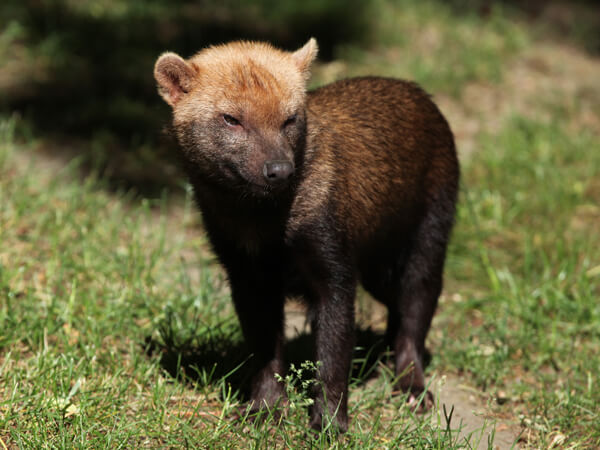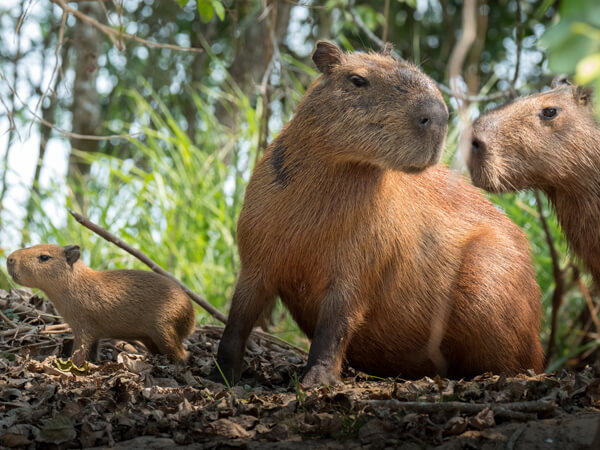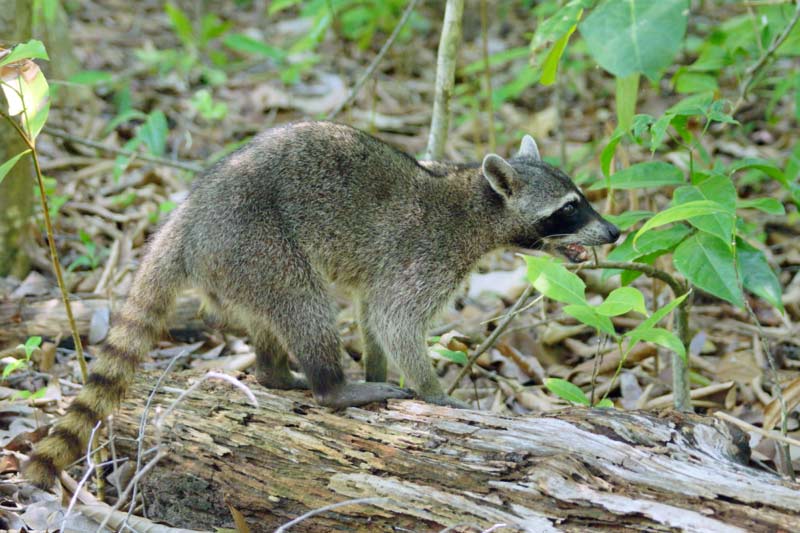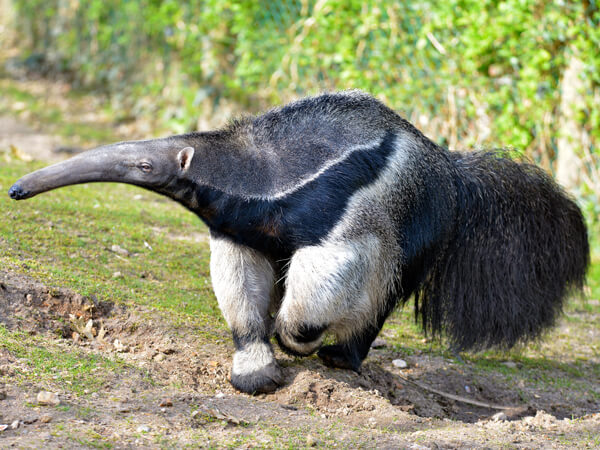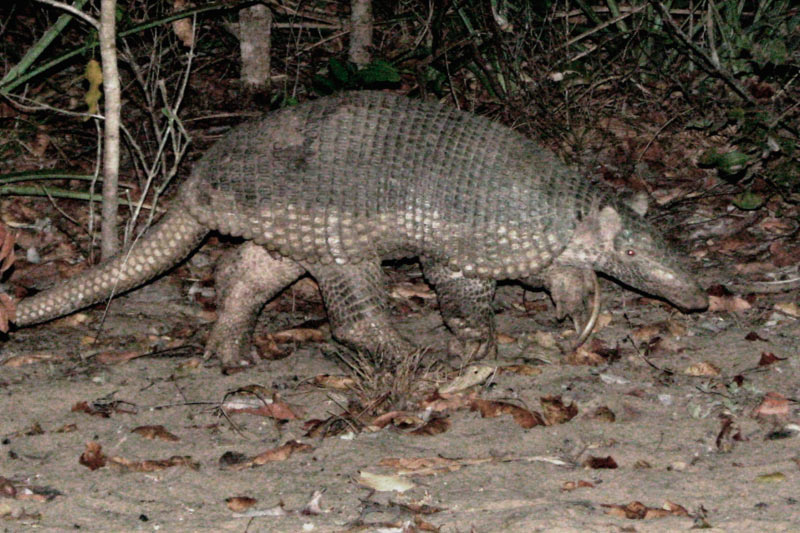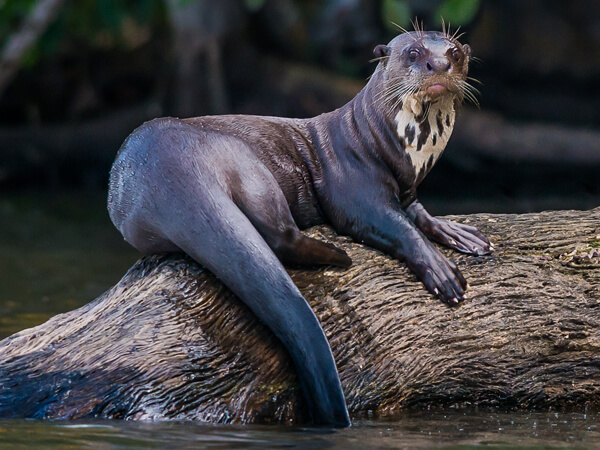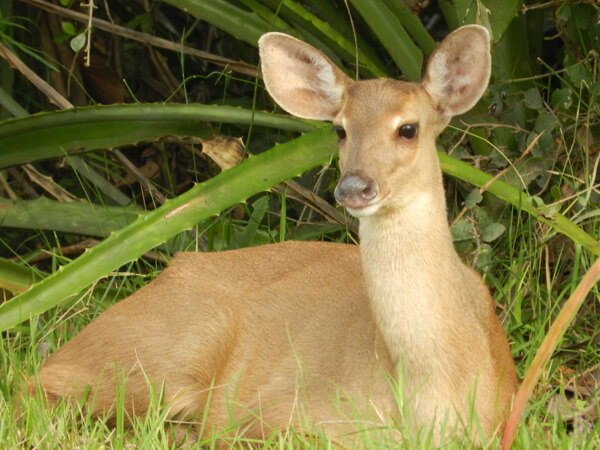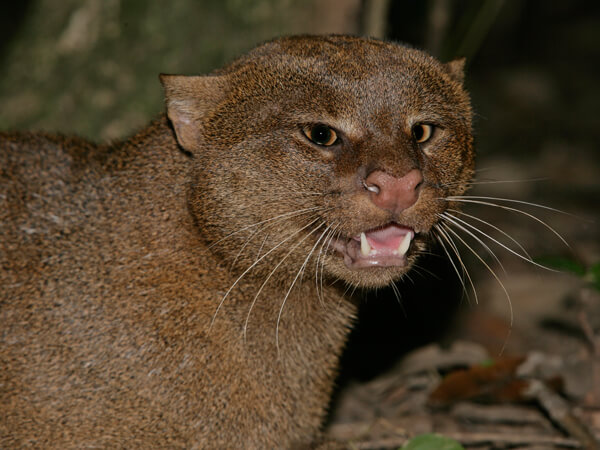Considered a small deer, the gray brocket is widespread throughout most of Brazil, serving as an important food resource for various species of predators.
Click to learn more
Distribution
The gray brocket occurs largely in Brazil, in biomes such as the Pantanal, Atlantic Forest, Cerrado, Pampas and Caatinga.
Features
The color of the gray brocket varies from red to gray; the belly area is often lighter, sometimes with white spots above the eyes. Gray brockets weigh up to 25 kilograms, and measure between 85 and 105 centimeters, with the height of the withers reaching up to 65 centimeters. The horns of this species are not branched – as in the marsh deer – and can reach 12 centimeters in length. They practice daytime, solitary habits but may form small groups when food is in short supply. The gray brocket is sometimes confused with the red brocket, as both are of similar size and color.
Behavior
Even though they have solitary habits, gray brockets will sometimes collect in small groups when there is a scarcity of food. They are shy and elusive since they are vulnerable prey for many predators. Males and females exhibit territorial behavior using odors (feces, urine and rubbing the body on objects) as well as visual cues (biting tree bark).
Food
Gray brockets are herbivores, feeding primarily on fruits, leaves and flowers.
Reproduction
The average length of gestation is seven months, after which females give birth to one cub at a time. A female can have up to two litters in the same year. Cubs are born with white spots distributed over their body, which helps with camouflage, but eventually disappear at the age of six months. The offspring remain with their mothers until they are eight months old, or until the mother gives birth again.
Conservation
They are listed as being of “least concern” by both the national list of ICMBio and the IUCN. The main threat to the species is hunting. In comparison with other types of deer, this species is at an advantage regarding deforestation as it adapts better to anthropogenic environments.

